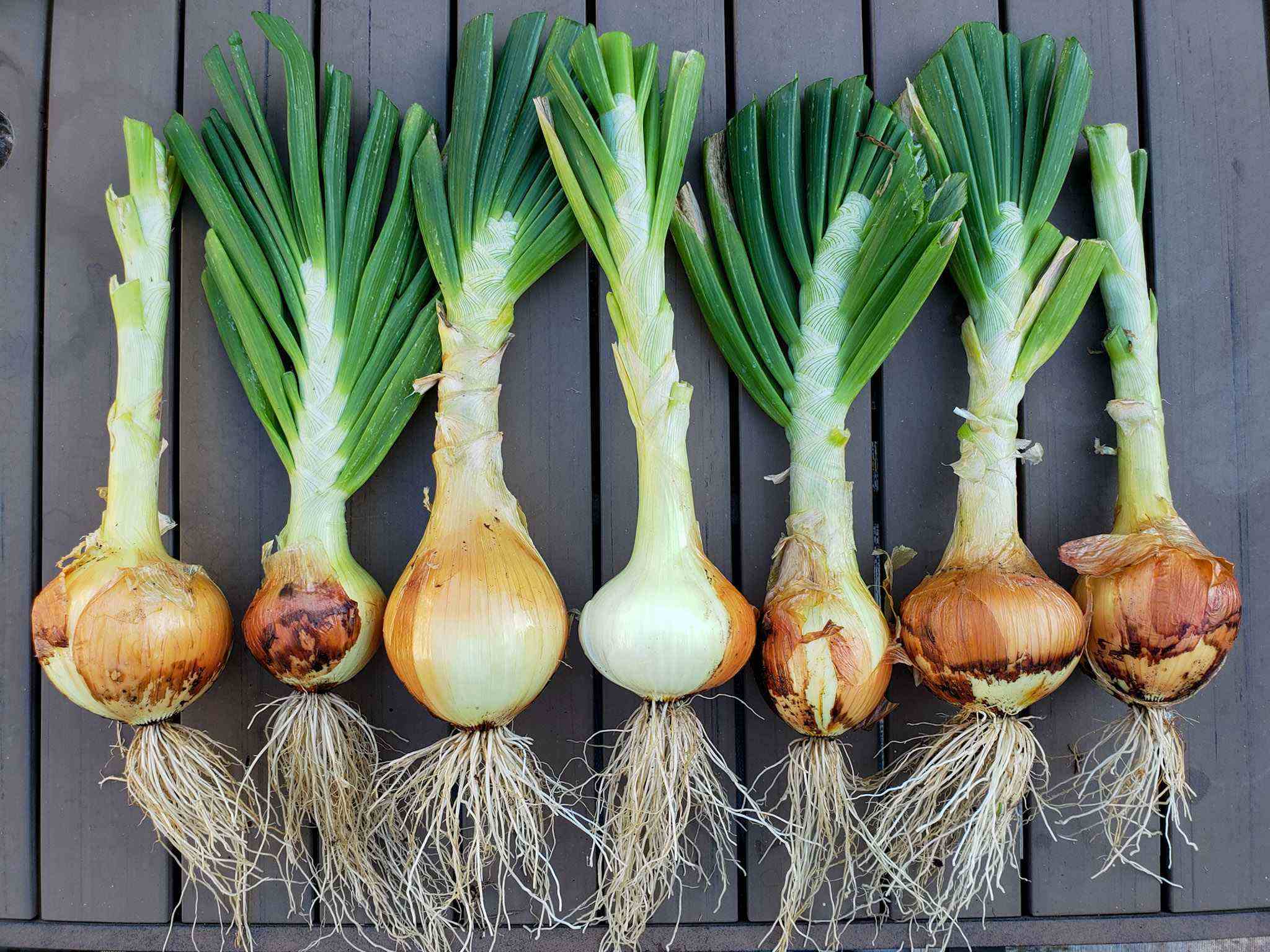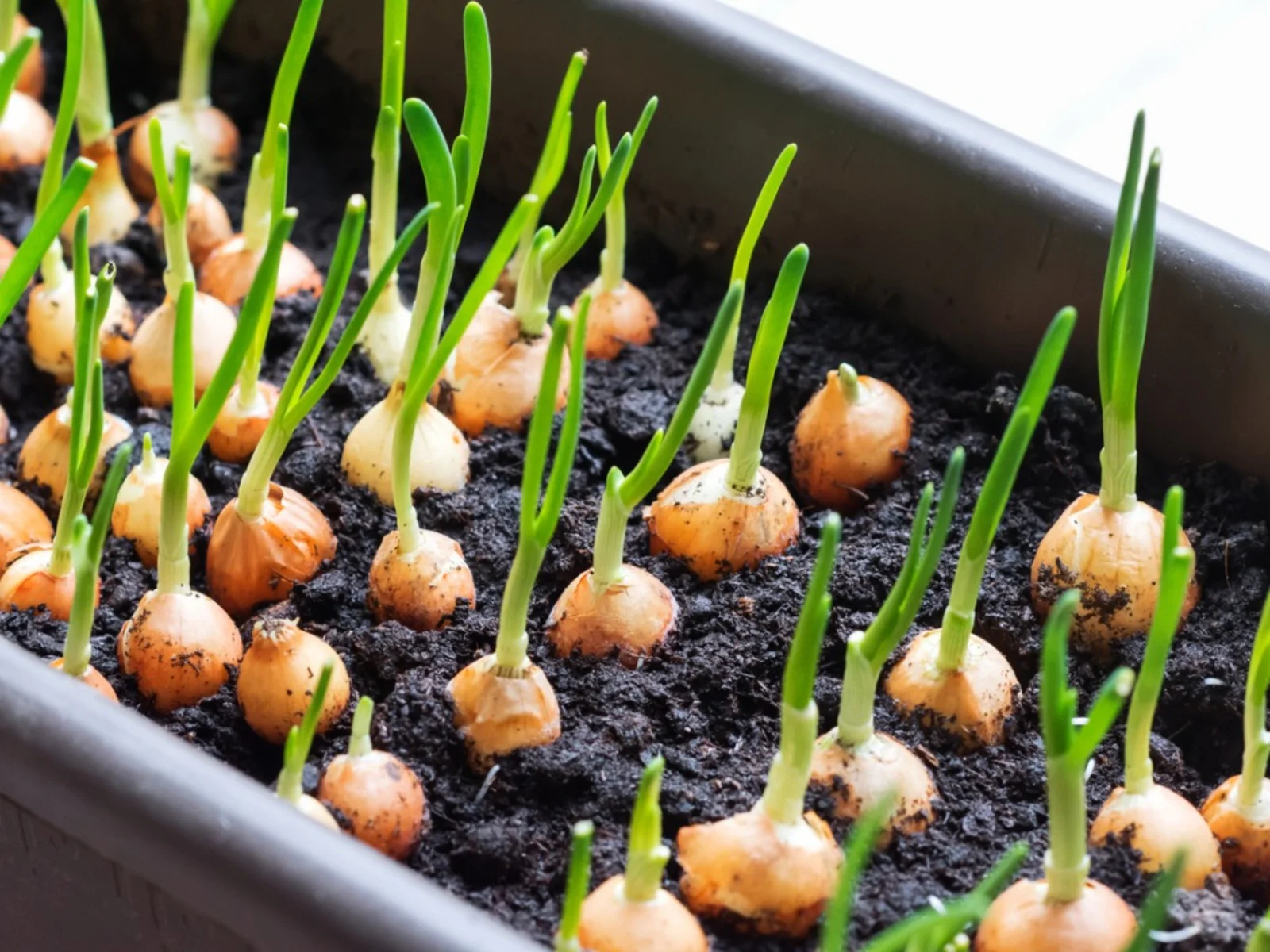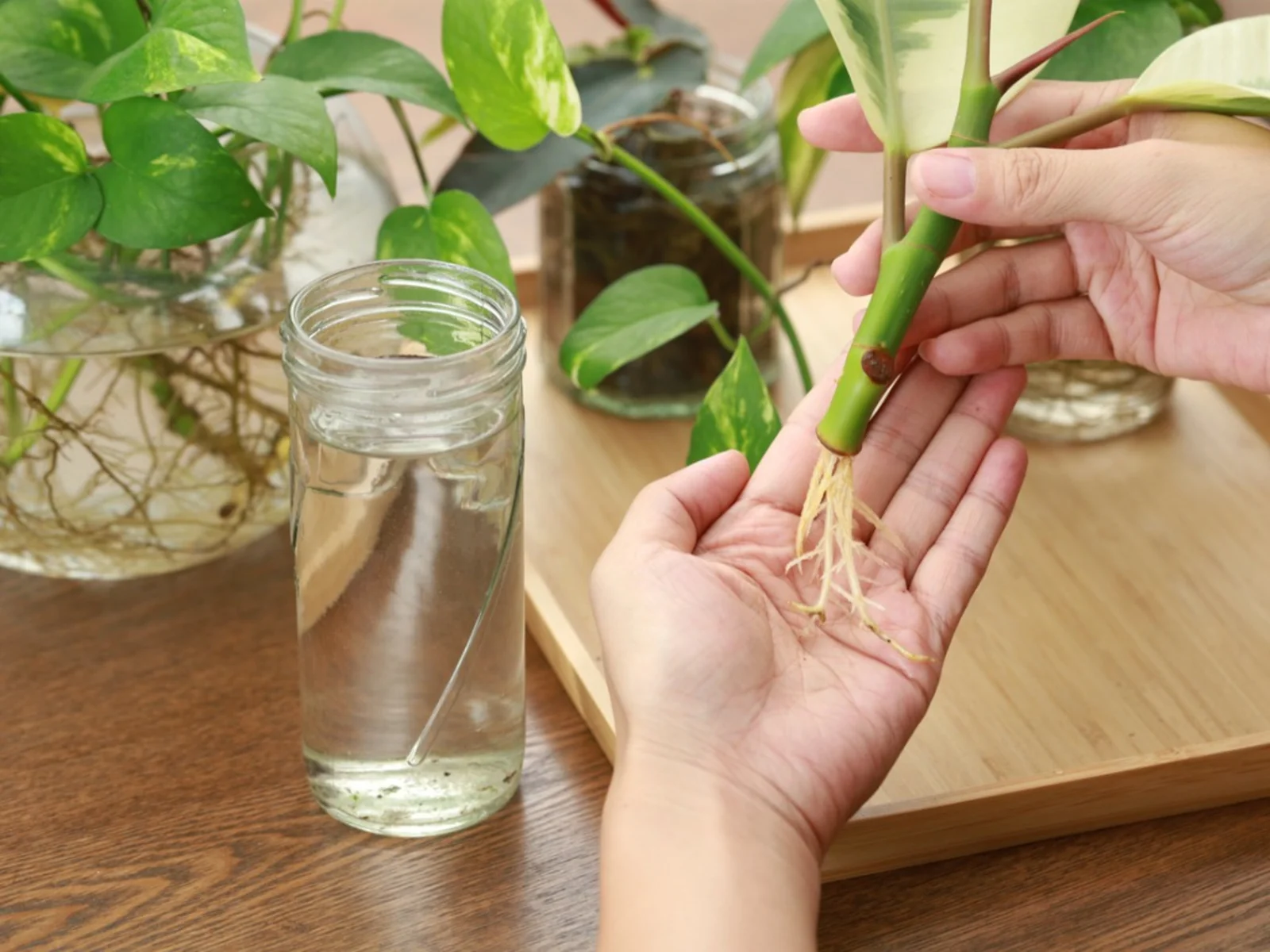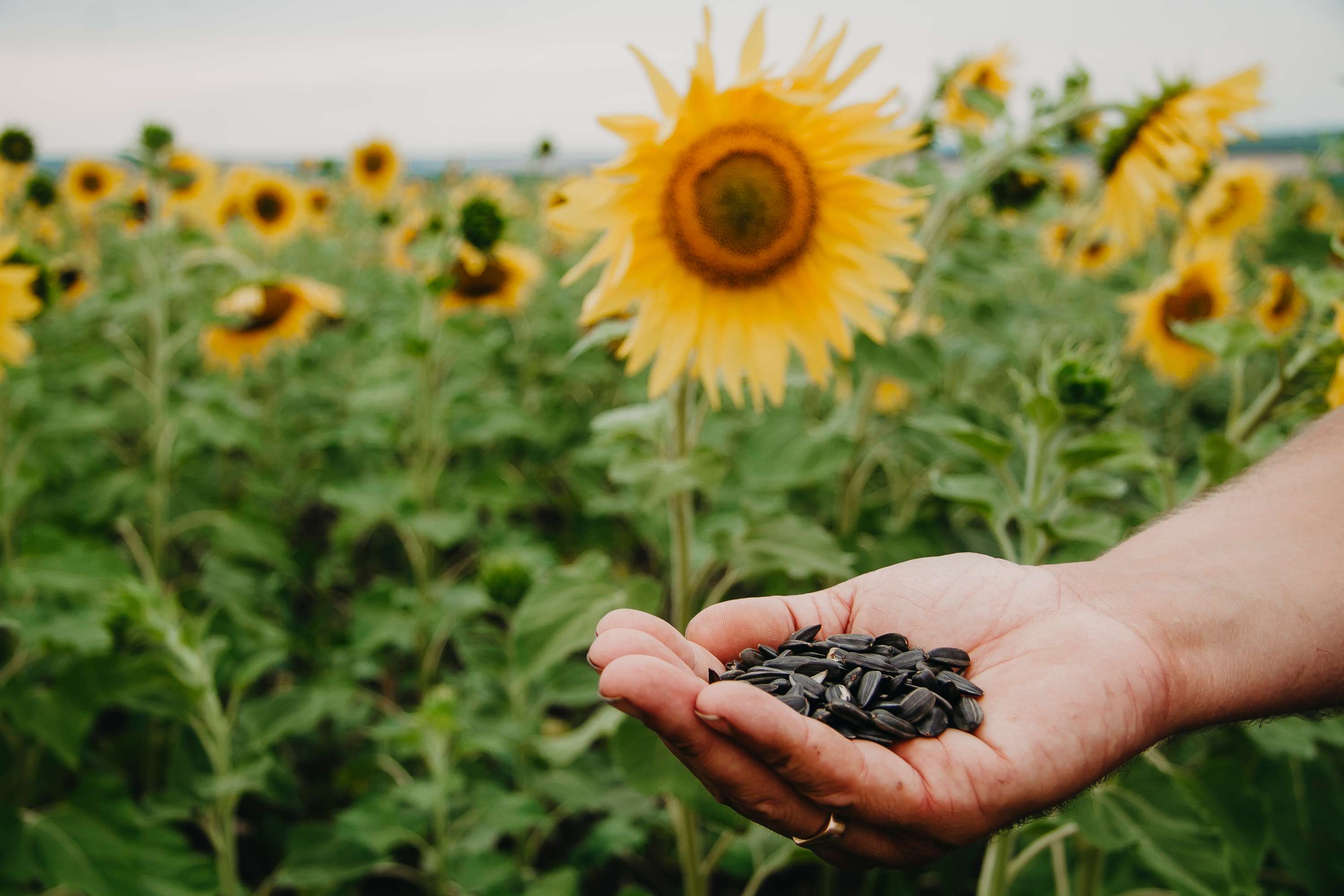Home>Gardening Basics>Getting Started>How To Store Onion Plants Before Planting


Getting Started
How To Store Onion Plants Before Planting
Modified: January 22, 2024
Learn the best way to store onion plants before planting and get started on your gardening journey.
(Many of the links in this article redirect to a specific reviewed product. Your purchase of these products through affiliate links helps to generate commission for Chicagolandgardening.com, at no extra cost. Learn more)
Table of Contents
Introduction
Welcome to the world of gardening! If you’re considering planting onions in your garden, it’s important to know how to properly store the onion plants before planting them. Storing onion plants correctly ensures their survival and healthy growth.
Onions are versatile vegetables that can add flavor to a wide variety of dishes. Whether you’re a seasoned gardener or just starting out, growing your own onions can be a rewarding experience. But before you can start planting onion sets or seeds, you need to ensure that they are properly stored.
Storing onion plants involves providing the right conditions for them to remain healthy and dormant until planting season. This allows the plants to develop strong root systems and establish a solid foundation for growth. By following the proper storage methods, you can maximize the potential of your onion plants and increase the likelihood of a bountiful harvest.
In this article, we’ll guide you through the process of storing onion plants before planting, from choosing the right variety to creating the ideal storage conditions. We’ll also cover topics such as inspecting the plants, preventing pests and diseases, and preparing the onion plants for planting.
Whether you’re a beginner or an experienced gardener, this article will provide you with the knowledge and tips you need to store your onion plants successfully. So let’s dive in and learn how to get your onion plants off to a great start!
Choosing the Right Variety of Onion Plants
When it comes to storing onion plants, selecting the right variety is crucial. There are numerous onion varieties to choose from, each with its own unique flavor and growth characteristics. Here are some factors to consider when choosing the right variety of onion plants:
- Day Length: Onions are classified into three types based on their day length requirements: short-day, intermediate-day, and long-day onions. Short-day onions require 10-12 hours of daylight, intermediate-day onions need 12-14 hours, and long-day onions thrive with 14-16 hours. Choose the variety that matches the length of your growing season.
- Growing Season: Consider the length of your growing season when selecting onion plants. Some varieties mature quicker than others, making them more suitable for regions with shorter growing seasons. If you have a longer growing season, you can opt for varieties that take longer to mature.
- Flavor and Storage Life: Different onion varieties have varying flavors and storage life. Some are sweeter and milder, while others are stronger and more pungent. Consider your preference and how long you intend to store the onions to select a variety that suits your needs.
- Growing Conditions: Take into account the environmental conditions in your area. Certain onion varieties are more suitable for specific climates, such as cold-hardy varieties for colder regions or heat-tolerant varieties for warmer areas.
- Disease Resistance: Check the disease resistance of the onion variety you’re interested in. Some varieties are more resistant to common onion diseases, such as downy mildew or onion smut, which can help improve the success rate of your crop.
Before storing your onion plants, it’s important to choose a variety that aligns with your preferences and growing conditions. Additionally, consider the amount of space you have available in your garden, as certain onion varieties require more room to grow. By selecting the right variety, you’ll be setting yourself up for a successful onion-growing experience.
Preparing the Onion Plants for Storage
Before you can store onion plants, it’s essential to prepare them properly. This preparation process ensures that the plants remain healthy and dormant during storage. Here are the steps to follow when preparing onion plants for storage:
- Harvesting: Harvest your onion plants when the foliage starts to turn yellow and collapse. Gently lift the plants out of the ground, being careful not to damage the bulbs or roots. Allow the plants to dry out for a couple of days by laying them in a single layer in a shaded, well-ventilated area.
- Curing: After the onion plants have dried, it’s time to cure them. Curing helps to extend their shelf life by toughening the outer skin. Place the onion plants in a well-ventilated location where the temperature is around 75-80°F (24-27°C) and humidity is low. Spread them out in a single layer, ensuring there is enough airflow around each plant. Let the onion plants cure for about 2-3 weeks until the outer skin becomes papery and the necks are completely dry.
- Trimming: Once the onion plants are cured, it’s time to trim them. Using sharp pruning shears or scissors, trim the roots to about 1 inch (2.5 cm) long and remove the dried foliage, leaving around 1-2 inches (2.5-5 cm) of the neck. Be careful not to cut into the neck, as this can increase the risk of spoilage during storage.
- Sorting: Before storage, sort your onion plants based on size and condition. Remove any onions that have signs of damage, rot, or disease. Set aside the largest and healthiest bulbs for planting and use the smaller or damaged ones first.
By following these preparation steps, you’ll ensure that your onion plants are in optimum condition for storage. Proper harvesting, curing, trimming, and sorting will help prolong the shelf life of the onions and prevent the spread of diseases or pests during storage. With well-prepared onion plants, you can look forward to a successful planting season and a bountiful onion harvest!
Proper Storage Conditions for Onion Plants
To ensure the longevity and quality of your stored onion plants, it’s crucial to provide them with the proper storage conditions. By creating an optimal environment, you can prevent premature sprouting, rot, or other storage-related issues. Here are the key factors to consider for storing onion plants:
- Temperature: Onions prefer to be stored in a cool environment with temperatures ranging from 32-40°F (0-4°C). Avoid storing onions in areas with extreme temperature fluctuations, such as near heaters or in direct sunlight.
- Humidity: Onion plants require low humidity levels to prevent moisture buildup and reduce the risk of rot. Aim for a humidity level of around 65-70%. You can achieve this by storing onions in a well-ventilated area where air can circulate freely.
- Light: Onions are sensitive to light, and exposure to bright light can cause greening and bitterness. Store onions in a dark or dimly lit location, such as a pantry or cellar, to maintain their flavor and quality.
- Airflow: Proper ventilation is essential for stored onion plants. Ensure that there is adequate airflow around the onions to minimize the chances of moisture buildup and fungal growth. You can achieve this by using breathable containers or mesh bags to store the onions.
It’s important to note that storing onions near certain fruits, such as apples and pears, should be avoided. These fruits emit a natural gas called ethylene, which can cause onions to sprout or spoil prematurely. Keep onions away from any ethylene-producing fruits to maintain their quality during storage.
By providing the proper storage conditions, you can extend the shelf life of your onion plants and preserve their flavor and freshness. Regularly monitor the storage area to ensure that the temperature, humidity, and airflow are maintained within the recommended range. With the right storage conditions, your onion plants will stay healthy and dormant until it’s time to plant them in the garden.
Storing Onion Plants in a Cool, Dry Location
When it comes to storing onion plants, finding a suitable location is essential. Ideally, you want to store the onions in a cool, dry area that provides the right conditions for their preservation. Here are some tips for storing onion plants in a cool, dry location:
- Select the Storage Area: Choose a storage area that is cool and well-ventilated. Basements, cellars, or cool garages are often ideal for storing onions. The area should have a consistent temperature, preferably between 32-40°F (0-4°C), to keep the onions dormant and prevent sprouting.
- Keep the Onions Dry: Moisture is a common enemy when it comes to storing onions. Before storing, make sure the onion plants are completely dry and free from any moisture. Remove any excess dirt or debris and allow them to air dry for a few days after harvest and curing.
- Choose Appropriate Storage Containers: Use breathable containers or mesh bags to store the onion plants. These containers allow for proper airflow, reducing the chances of moisture buildup and rot. Avoid using plastic bags, as they can trap moisture and lead to the onions deteriorating quickly.
- Avoid Piling Onions: It’s important to avoid piling onions on top of each other during storage. Instead, spread them out in a single layer to ensure adequate airflow around each onion. This will help prevent the spread of moisture and maintain the quality of the onions.
- Regularly Check on the Onions: Make it a habit to inspect the stored onions periodically. Look for any signs of spoilage, mold, or rot. Remove any onions that show signs of damage or decay to prevent the spread of disease to the remaining plants.
Remember, the cooler and drier the storage location, the longer your onion plants will stay fresh. Heat and excessive moisture can lead to sprouting, mold growth, or rotting. By following these guidelines and paying attention to the storage conditions, you can extend the shelf life of your onion plants and ensure their quality until planting season arrives.
Inspecting Onion Plants Regularly
Regular inspections of your stored onion plants are crucial to ensure their health and longevity. By checking on the onions periodically, you can identify and address any issues promptly, preventing further damage or spoilage. Here are some important steps to follow when inspecting onion plants:
- Look for Signs of Moisture: Examine the onion plants for any signs of moisture or condensation. Moisture can lead to rot and mold growth, which can spread quickly to other onions. If you notice any dampness, remove the affected onions and adjust the storage conditions to reduce moisture levels.
- Check for Mold or Fungus: Inspect the onions for any signs of mold or fungus growth. These can appear as fuzzy spots or patches on the outer skin. If you come across any onions with mold, remove them immediately to prevent the spread of the fungus to other onions.
- Monitor for Soft or Decaying Onions: Gently squeeze the onions to check for any soft spots or signs of decay. If an onion feels soft or squishy, it may be starting to rot. Remove any soft or decaying onions from the storage area to prevent the spread of decay to the healthy onions.
- Check for Sprouting: Keep an eye out for any onions that have started to sprout. Sprouting indicates that the onions are no longer in a dormant state. Remove sprouted onions from the storage area and use them as soon as possible, as they won’t store well.
- Inspect for Pests: Look out for any signs of insect infestation, such as tunnels, webs, or larvae. Common onion pests include onion maggots, thrips, and onion flies. If you spot any pests, take prompt action to control and eliminate them to prevent further damage to the onion plants.
Regularly inspecting the stored onion plants allows you to catch any issues early on and take appropriate measures to preserve the quality of the remaining onions. By removing any damaged or affected onions, you can prevent the spread of disease or pests and safeguard the overall health of your stored onion plants.
Preventing Pests and Diseases
Keeping pests and diseases at bay is essential when storing onion plants. By implementing preventive measures, you can protect your stored onions from infestations and diseases, ensuring their long-term viability. Here are some effective strategies for preventing pests and diseases:
- Clean and Sanitize: Before storing onion plants, make sure the storage area is clean and free from any debris or remnants of previous crops. Remove any weeds or decaying plant matter that may attract pests or harbor diseases.
- Proper Storage Conditions: As mentioned earlier, maintaining the right storage conditions is crucial for onion plant preservation. By keeping the storage area cool, dry, and well-ventilated, you can discourage the development of pests and reduce the risk of fungal infections.
- Inspect Incoming Onions: When bringing newly harvested onions from the garden or purchasing them, carefully inspect each onion for signs of pests or diseases. By identifying any potential issues early on, you can prevent them from spreading to the other stored onions.
- Separate Infected Onions: If you come across any onions showing signs of pests or diseases during inspection, segregate them immediately. Isolate those onions from the rest to prevent the spread of infestations or infections.
- Use Natural Remedies: Consider using natural methods to combat pests and diseases. For example, you can use insecticidal soaps or neem oil to control pests like aphids or mites. Additionally, practicing crop rotation and intercropping with pest-repellent plants can help deter pests and diseases.
- Practice Good Hygiene: Maintain proper hygiene practices when handling onions. Wash your hands thoroughly before and after working with onion plants to avoid transmitting diseases or pests from one onion to another.
- Regular Monitoring: Continuously monitor the stored onions for any signs of pest activity or disease development. Early detection allows for swift action, such as removing affected onions or implementing appropriate pest control methods.
- Dispose of Infested Onions Properly: If you encounter a severe pest or disease issue, it may be necessary to dispose of the infested onions entirely. Seal them in a plastic bag and dispose of them in a manner that prevents further spread of the pests or diseases.
By implementing these preventive measures, you can significantly reduce the chances of pests infesting your stored onion plants and minimize the risk of diseases spreading. Regular monitoring and prompt actions are key to preserving the health and quality of your stored onions.
Preparing Onion Plants for Planting
Before you can plant your stored onion plants, it’s important to prepare them adequately. Proper preparation ensures that the plants are in optimal condition for successful growth and development. Follow these steps to prepare your onion plants for planting:
- Remove Storage Layers: Begin by gently unwrapping or removing the storage layers around the onion plants. Take care not to damage the delicate roots or bulbs as you separate the layers.
- Inspect the Plants: Once unwrapped, carefully inspect each onion plant for any signs of damage, disease, or pests. Look for any soft or mushy spots, discoloration, or visible signs of pests. Remove any damaged or compromised plants.
- Moisten the Roots: Before planting, it’s beneficial to moisten the roots of the onion plants. You can do this by dipping the roots in water or lightly misting them. This helps to hydrate the roots and promote healthy establishment when planting.
- Trim Roots and Foliage: Trim any excessively long or tangled roots to ensure they are tidy and able to easily spread out in the planting hole. Also, if the foliage of the onion plant is excessively long, you can trim it slightly to reduce the stress on the plant during transplanting.
- Soak in Liquid Fertilizer (Optional): If desired, you can soak the roots of the onion plants in a diluted liquid fertilizer solution before planting. This can provide an extra boost of nutrients to support the initial growth of the plants.
- Prepare the Planting Area: Before planting, prepare the soil in the designated area of your garden. Remove any weeds or debris and loosen the soil to ensure good drainage and allow the onion roots to establish easily.
- Plant at the Correct Depth: When planting the onion plants, ensure that you place them at the correct depth. The bottom of the bulb should be level with the soil surface, with the roots spreading out and covered gently with soil.
- Water and Mulch: After planting, water the newly transplanted onion plants thoroughly. This helps to settle the soil around the roots and maintain moisture levels. Apply a layer of mulch around the plants to conserve moisture, suppress weeds, and regulate soil temperature.
By following these preparation steps, you’ll ensure that your stored onion plants are well-prepared and ready for successful planting. Providing optimal planting conditions and care will help the onion plants establish quickly and thrive in your garden, setting the stage for a fulfilling harvest.
Conclusion
Properly storing onion plants before planting is crucial for their health and vitality. By choosing the right variety, preparing the plants correctly, and creating optimal storage conditions, you can ensure the success of your onion crop. Regular inspections, pest and disease prevention, and careful preparation for planting further contribute to a successful onion-growing experience.
Storing onion plants begins with selecting the appropriate variety based on factors such as day length, growing season, flavor, and disease resistance. Properly preparing the plants involves harvesting at the right time, curing them to toughen the outer skin, trimming the roots and foliage, and sorting the onions based on size and condition.
Once prepared, it is important to store onion plants in a cool, dry location that provides adequate ventilation. Regularly inspect the stored onions for signs of damage, moisture, mold, sprouting, or pests. By checking on them regularly, you can address any issues promptly and prevent further damage or spread of disease.
Preventing pests and diseases is vital when storing onion plants. Cleaning and sanitizing the storage area, practicing good hygiene, and inspecting incoming onions can help minimize the risk of infestations and diseases. Using natural remedies and monitoring for signs of pest activity or disease development allows for early detection and effective action.
Lastly, preparing onion plants for planting involves removing the storage layers, inspecting the plants, moistening the roots, trimming roots and foliage, and optionally soaking them in a diluted liquid fertilizer solution. Planting the onion plants at the correct depth, watering them thoroughly, and applying mulch around the plants contribute to their successful establishment in the garden.
By following these guidelines and best practices, you can ensure the vitality and health of your onion plants from storage to planting. With proper care and attention, you’ll be on your way to a successful onion harvest, enjoying the flavors and benefits of homegrown onions. Happy gardening!








